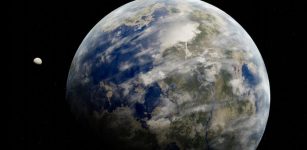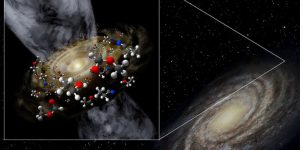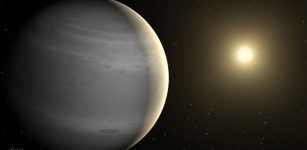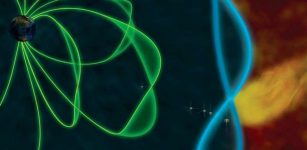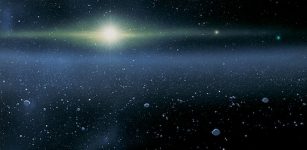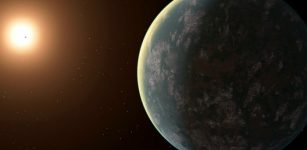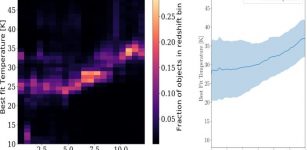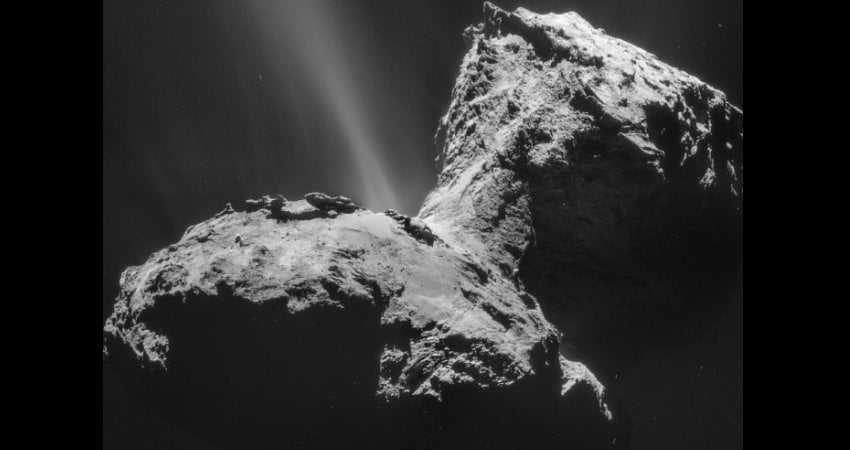Dwarf Planet Ceres: Organic Chemistry And Salt Deposits In Urvara Impact Crater
Eddie Gonzales Jr. – MessageToEagle.com – The third-largest crater on the dwarf planet Ceres was geologically active at least once many millions of years after its formation.
In a recent study published today in the journal Nature Communications, researchers from the Max Planck Institute for Solar System Research (MPS) in Göttingen, the University of Münster (WWU) and the National Institute of Science Education and Research (NISER) in Bhubaneswar, India present the most detailed study of Urvara crater to date.
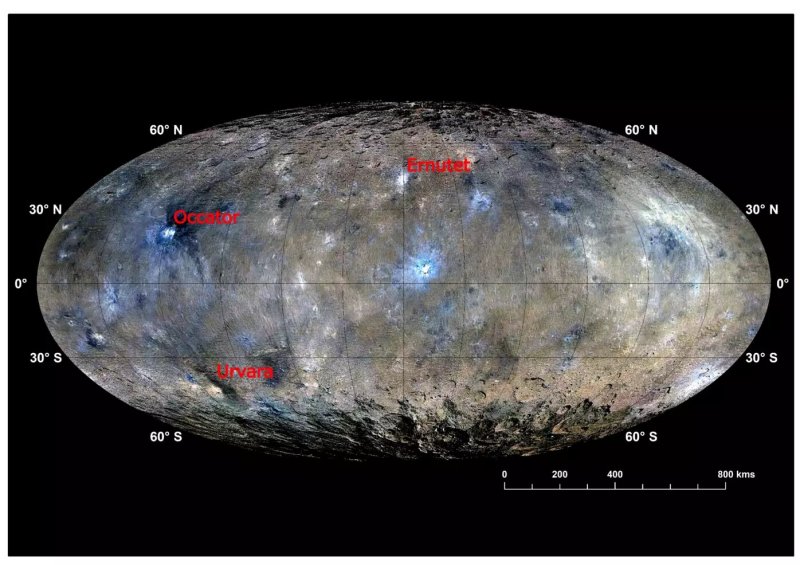 Rugged surface: Numerous large, striking craters are found on the surface of dwarf planet Ceres. Credit: MPS, based on data from the Dawn mission: NASA/JPL-Caltech/UCLA/MPS/DLR/IDA
Rugged surface: Numerous large, striking craters are found on the surface of dwarf planet Ceres. Credit: MPS, based on data from the Dawn mission: NASA/JPL-Caltech/UCLA/MPS/DLR/IDA
For the first time, they evaluated camera images from the last phase of NASA’s Dawn mission, which reveal geological structures only a few meters in size. The Dawn spacecraft entered orbit around the dwarf planet in 2015 and studied it up close for about three and a half years. Like Occator crater, Urvara crater may have been the scene of cryovolcanic activity, the researchers argue.
The study supports the picture that a global saline ocean extended beneath Ceres’ crust, some of which may still be liquid today.
Numerous large craters cover the surface of dwarf planet Ceres, the largest body in the asteroid belt at about 960 kilometers in diameter. Probably the most striking of these craters is Occator located in the northern hemisphere. The bright spots in its interior, which were already clearly visible during Dawn’s approach phase, turned out to be saline remnants of a subsurface brine, which rose to the surface through cryovolcanic processes until recent geological times.
In another large crater, called Ernutet, there is evidence of exposed organic compounds and thus very complex chemistry. In their latest publication, researchers led by the MPS now turn their attention to Urvara crater. Located in the southern hemisphere, it is Ceres’ third largest crater, with a diameter of 170 kilometers. The impact that formed it about 250 million years ago is thought to have revealed material from depths of up to 50 kilometers.
“The large impact structures on Ceres give us access to the deeper layers of the dwarf planet,” explains Andreas Nathues of the MPS, first author of the current study and Lead Investigator of Dawn’s camera team. “As it turns out, the current topography and mineralogical composition of some of Ceres’ large craters is the result of complex and long-lasting geological processes that have altered the dwarf planet’s surface,” he adds.
High-resolution imaging and spectroscopic data are needed to trace these processes as accurately as possible. The most precise observational data of Urvara crater were obtained during Dawn’s extended mission: after the primary mission, which was initially designed to last two years, expired, the remaining fuel was sufficient to fly more daring and highly elliptical orbits taking the spacecraft to within 35 kilometers of the surface. During this phase the two Dawn Framing Cameras, the mission’s scientific camera system, took images in which structures several meters in size can be identified. The camera system was developed and built under the leadership of the MPS and operated by the MPS during the mission.
The high-resolution images of Urvara crater reveal a geologically distinctly diverse landscape. Multiple terraced crater walls enclose the impact basin; the most prominent feature rising slightly away from the center of the crater is a mountain range about 25 kilometers long and 3 kilometers high. Its southern flank is the site of rugged cliffs, areas peppered with boulders—and occasional bright material reminiscent of the famous bright spots of Occator crater. Furthermore, the images show a deep central depression, areas with remarkably smooth surfaces, and some dotted with numerous smaller, rounded depressions.
“Our analysis reveals that different areas of the crater have very different ages,” says Nico Schmedemann of WWU’s Institute of Planetology. “The age difference is up to 100 million years. This suggests that processes were at work that lasted long after the crater was actually formed,” he adds. For studies of this type, researchers count the small craters that cover every surface of atmosphereless bodies. Because older surfaces have had more time to “accumulate” such impacts of smaller asteroids, they have more craters than younger ones. In addition, models of the strength of bombardment at different times play a role in determining the exact age.
According to these models, the most pristine areas in Urvara crater are about 250 million years old. This time marks the formation of the crater itself. Younger surfaces within the crater include extensive smooth, dark areas, as well as pits that were probably formed by gas escape in the subsurface.
Further clues to the crater’s turbulent past are provided by images taken using the camera system’s color filters. They allow to conclude which wavelength ranges of visible light certain surfaces reflect into space—and thus help infer their mineralogical composition. As it turns out, the bright material is salts. Data from Dawn’s VIR spectrometer, contributed to the mission by the Italian space agency ASI, also indicate that organic compounds have been deposited along with salts on a slope west of the central mountain range. Such a combination of salt deposits and organic compounds has not been observed before. The deposits of organic compounds also appear to be comparatively young.
“The origin and formation of organics on Ceres remain interesting open questions that have important implications for the overall geologic history of Ceres as well as potential links to astrobiology and habitability. The organics we believe to have found in Urvara basin in the Southern Hemisphere differ from the organic rich areas in Ernutet crater in the Northern Hemisphere and will help us to answer these questions”, says NISER-scientist Guneshwar Thangjam. “The team is working on these aspects using both FC and VIR spectral data”, he adds.
“Overall, the Urvara crater presents us with a decidedly complex picture that we do not yet fully understand and that leaves room for two interpretations,” Andreas Nathues summarizes the results. For example, the impact that formed Urvara crater could have transported salts from the interior of the dwarf planet to the surface.
However, some evidence suggests that a salty brine was involved instead, rising up from the interior and initiating further processes. Whether the brine reached the surface or merely accumulated just below it is unclear.
Regardless of the exact interpretation, the current results reinforce the picture of the dwarf planet that the Dawn mission has drawn of Ceres in recent years: a geologically active body with saline layers extending beneath its crust at various depths.
These may be related to an earlier subsurface ocean that also contained organic compounds. Despite Ceres’ vast distance from the Sun, thanks to the dissolved salts, this brine could still survive today in large liquid reservoirs at depths of about 40 kilometers.
Written by Eddie Gonzales Jr. – MessageToEagle.com Staff

